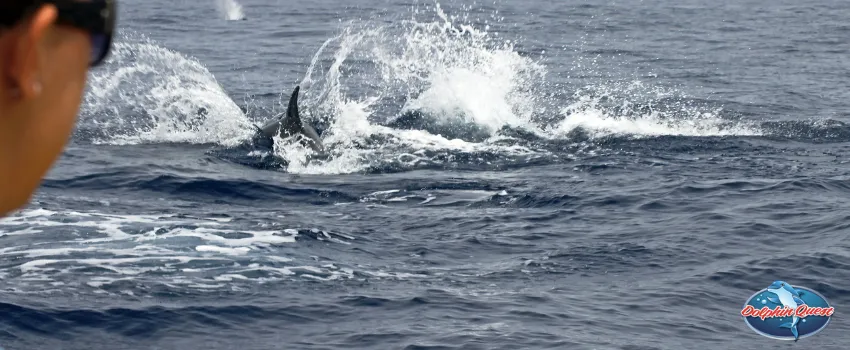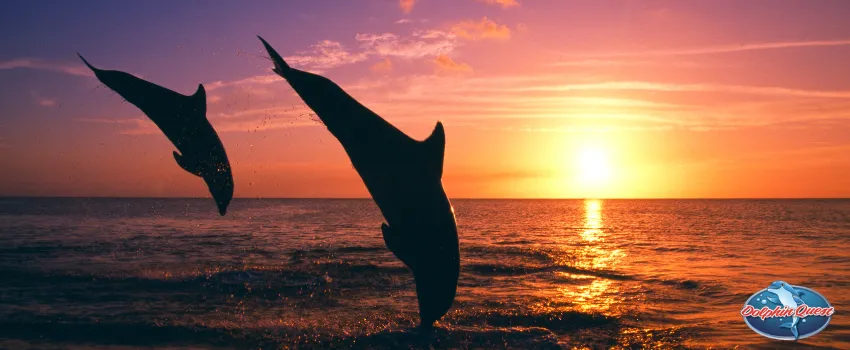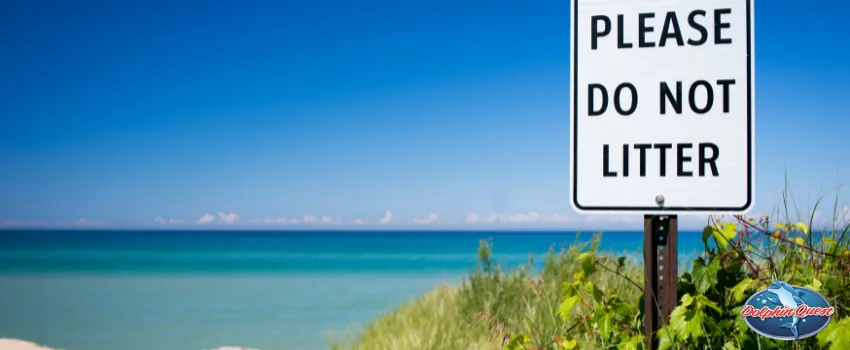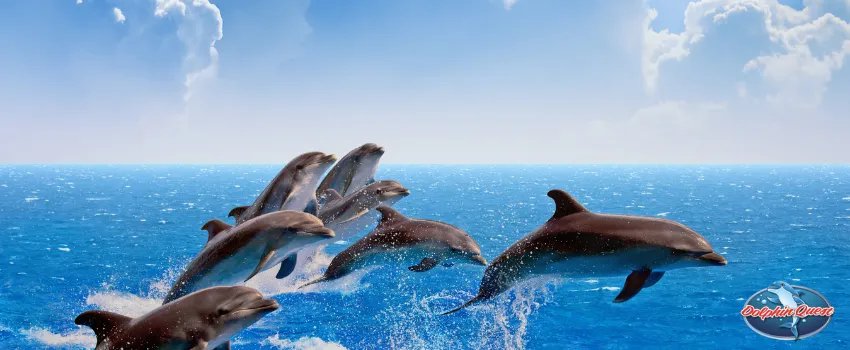Taking part in a dolphin-watching adventure can be the highlight of a trip. Equal parts exciting and educational, a dolphin-watching tour is an opportunity to get to know the environment and the creatures that live within. To ensure that everyone involved has a memorable experience, here are a few tips on how to have a responsible and safe cruise:
1. Choosing the Right Tour
Having a safe and fun tour begins before the trip is booked. There are many tour operators worldwide, with Florida hosting countless operations. Ensuring you’re booking a reputable tour is key to experiencing the best dolphin-watching tour you can possibly have.
How do you know if a tour operator is reputable? Research and select a dolphin-watching tour operator with a good reputation for prioritizing passengers’ and dolphins’ safety and well-being. Look for operators that adhere to responsible wildlife viewing guidelines.
A responsible tour operator will also emphasize the comfort of both the guests and the dolphins. Read online reviews and seek opinions from others who have hired the operator you are interested in.
If a dolphin-watching tour does not discuss safety or consideration of the environment, then it may not be worth supporting. One way to gauge a tour operator’s credentials is by inspecting their certifications and permits. All tour operators must be in good standing with the United States Coast Guard and adhere to certain marine protections and regulations.
Having these certifications means the operator likely adheres to ethical standards.
2. Guidelines for Wildlife Viewing

Wildlife viewing guidelines are created with the safety of guests and, of course, the wildlife in mind. These guidelines emphasize the need and necessity for visitors and wildlife to coexist. A responsible tour operator will have guidelines in place for both guests and crew to adhere to.
A few significant aspects that all wildlife viewing guidelines should have include:
- Maintaining a safe distance from the animal(s) being viewed.
- Avoiding chasing the animals.
- Never feeding the animals.
As for dolphins, maintaining a safe distance is easy enough, as a reputable tour operator’s vessel will attract dolphins on their own. If a dolphin feels safe enough to approach the vessel, the operator has followed the wildlife viewing guidelines. Feeding dolphins is illegal in Florida, so any tour operator doing so could lose their license to operate.
3. Being Flexible and Patient
Tour operators live on the notion that if a guest books a cruise with them, they will see dolphins. This isn’t always the case; no tour operator can guarantee that a dolphin or dolphins will appear. A trustworthy tour operator will understand that dolphins are wild animals and cannot be made to do a show and dance for their guests.
This isn’t to say that an esteemed tour operator cannot mitigate the disappointment of a dolphin no-show. Some tour operators, such as Sunshine Scenic Tours, offer free cruises later if no dolphins are seen. This is evidence that the tour operator is knowledgeable of dolphin behavior.
In addition, a reputable dolphin-watching tour operator will offer activities on board that are not reliant on a dolphin making an appearance. Examples of these activities include pointing out neat information about the area or taking a tour of the coast.
4. Educating Yourself Before You Go

As the fictional characters in the marketing concept known as G.I. Joe once said, “Knowing is half the battle!” Learn about the specific species of dolphins in the area you’re visiting, their behaviors, and the guidelines set by local authorities for ethical wildlife viewing.
For instance, did you know that the Atlantic Bottlenose Dolphin is the most prominent species in Boca Ciega Bay? In fact, there are near to 450 individuals living in the area. The non-migratory dolphins love spending time in and around the Dolphin Quest, our very own dolphin-watching tour vessel, and have become quite familiar with it.
One thing to note in Boca Ciega Bay is that up to ten calves — or dolphin babies — are born in the area every year. Seeing a baby dolphin in the wild is worth the excursion itself. Therefore, knowing when the most opportune time to see them in the wild would be to your advantage (hint: it’s between May and August).
Knowing the rules laid out by the authorities is also fundamental to enjoying yourself and, more importantly, not running afoul of the law! As mentioned, feeding dolphins is illegal, but did you know that touching manatees is illegal? The more you know!
5. Report Injured or Stranded Dolphins
With any luck, you’ll not have to be the bearer of bad news when reporting an injury sustained by our local wildlife. However, the crew aboard your chosen dolphin-watching tour vessel should be trained to report injured or stranded dolphins.
Inquire with the captain about the protocol for reporting injuries. They should know right away how to inform the relevant parties.
6. Minimizing Your Footprint

Littering is a problem both on and offshore. Keeping the environment clear of debris starts with you. Any food or beverage consumed on board your vessel should be disposed of appropriately. An environmentally-aware operation will have refuse bins readily available and accessible.
Further, reducing noise is vital for all creatures, big and small. Imagine trying to eat dinner as a roaring engine passed through your dining room! Aboard the Dolphin Quest, minimizing our impact is one of our top priorities, and we emphasize this on every excursion.
Key Takeaway
In the dance of waves and chirps of marine life, dolphin-watching stands out as a mesmerizing experience. But as we venture into their habitat, it’s crucial to tread lightly, ensuring our curiosity doesn’t disrupt their world.
By following these six tips, you can relish the beauty of dolphins, all while prioritizing their safety and well-being. Let’s embark on tours championing respect for nature, forging a path of responsible tourism for future generations.
Watch, wonder, and protect by joining a dolphin tour today with Sunshine Scenic Tours.
Ready to experience the magic of the sea? Dive into a responsible and unforgettable aquatic adventure with our enchanting dolphin cruise on Madeira Beach. And remember that our environment is worthy of protection, for its own sake and for future generations who wish to experience it as we have.
Choosing the right tour to book is the first step in responsibly enjoying the company of dolphins. Here at Sunshine Scenic Tours, our motto is to “inspire, educate and conserve,” and we live by this motto every day.











